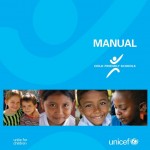Quality education is education that works for every child and enables all children to achieve their full potential. UNICEF
Today architect, Joe Wiegerinck from Creative Innovation Architects, came to our school to work with an enrichment group of students who are designing a school for a community in Afghanistan based on the UNICEF Child Friendly Schools Design Manual criteria. Joe firstly helped the students to identify five key areas for consideration before beginning to design any building.
They are:
- Site – Is it a remote location? Is it a safe place? Does it slope? Does it have a view? What infrastructure is nearby?
- Who? – Who are we building for? What age group?
- Culture – What beliefs and cultural implications need to be considered?
- Materials – What local materials are available? Timber, stone or mud?
- Needs? – What do we want this structure to give the owners? What are their needs/purpose of the building? i.e. classrooms, kitchen, toilets…
Students were then taken through the rough planning stage as they decided on classrooms, administration buildings, gardens, prayer facilities and a soccer field for example. After this Joe showed the students how to create a scale plan that included doors, windows and furniture. Next week we will finish our rough plans and commence transforming those plans to scale on large sheets of graph paper. Afghan students from Coffs Harbour High School will be joining the group in week four to select a location for the individual school designs. The students will need to create justifications for their projects before they are able to begin building their models using virtual 3D technology or concrete materials.
This is a wonderfully rich and very rewarding project and I think Mrs Newton, Mrs Booth and Yarob are enjoying it as much as the children! Many thanks again to Joe for taking the time to visit our school and teach our students about some of the design principles an architect uses 🙂
Mrs Booth, Mrs Newton and Yarob






